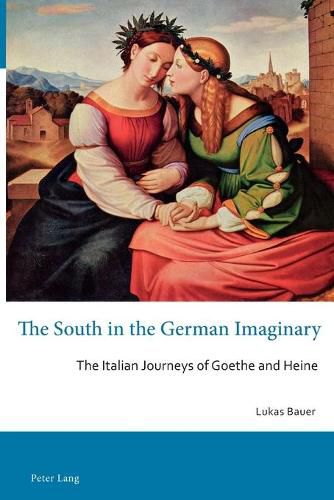Readings Newsletter
Become a Readings Member to make your shopping experience even easier.
Sign in or sign up for free!
You’re not far away from qualifying for FREE standard shipping within Australia
You’ve qualified for FREE standard shipping within Australia
The cart is loading…






This title is printed to order. This book may have been self-published. If so, we cannot guarantee the quality of the content. In the main most books will have gone through the editing process however some may not. We therefore suggest that you be aware of this before ordering this book. If in doubt check either the author or publisher’s details as we are unable to accept any returns unless they are faulty. Please contact us if you have any questions.
The division between North and South in Europe represents a geographical as well as a cultural boundary that has influenced the way many European nations think about their history and identity. This divide is particularly prominent in the cultural dialogue between Germany and Italy and has played an important role in the construction of German identity. This study explores German representations of Italy in the early nineteenth century by examining the Italian travel writings of Johann Wolfgang von Goethe and Heinrich Heine. It analyses Goethe’s Italienische Reise and Heine’s Italian Reisebilder and focuses on the negotiation of cultural identity through representations of the North-South divide.
The book compares Goethe’s complex attitudes towards Germany during this period with Heine’s wrestling with his place in German culture, as seen through their depictions of Italy. Goethe pointed to the classical heritage of Greek antiquity as the source not only of Italian, but also of German, cultural traditions and therefore as an essential element of German identity. Heine called into question Goethe’s experience of Italy and instead used his travels to reveal the instability of German identity and the changing nature of the European community. By investigating the travel narratives of Goethe and Heine, this study reveals the influences of historical and political change on perspectives on the South in Germany.
$9.00 standard shipping within Australia
FREE standard shipping within Australia for orders over $100.00
Express & International shipping calculated at checkout
This title is printed to order. This book may have been self-published. If so, we cannot guarantee the quality of the content. In the main most books will have gone through the editing process however some may not. We therefore suggest that you be aware of this before ordering this book. If in doubt check either the author or publisher’s details as we are unable to accept any returns unless they are faulty. Please contact us if you have any questions.
The division between North and South in Europe represents a geographical as well as a cultural boundary that has influenced the way many European nations think about their history and identity. This divide is particularly prominent in the cultural dialogue between Germany and Italy and has played an important role in the construction of German identity. This study explores German representations of Italy in the early nineteenth century by examining the Italian travel writings of Johann Wolfgang von Goethe and Heinrich Heine. It analyses Goethe’s Italienische Reise and Heine’s Italian Reisebilder and focuses on the negotiation of cultural identity through representations of the North-South divide.
The book compares Goethe’s complex attitudes towards Germany during this period with Heine’s wrestling with his place in German culture, as seen through their depictions of Italy. Goethe pointed to the classical heritage of Greek antiquity as the source not only of Italian, but also of German, cultural traditions and therefore as an essential element of German identity. Heine called into question Goethe’s experience of Italy and instead used his travels to reveal the instability of German identity and the changing nature of the European community. By investigating the travel narratives of Goethe and Heine, this study reveals the influences of historical and political change on perspectives on the South in Germany.